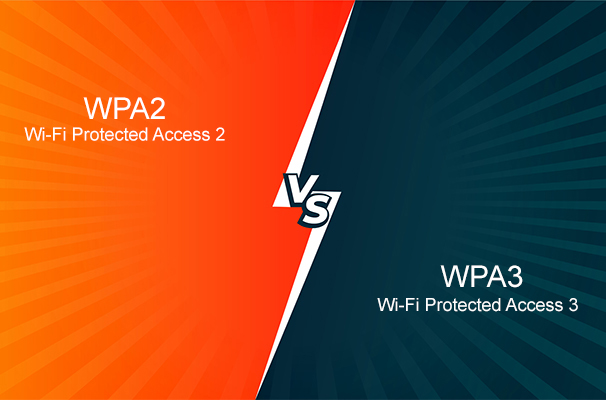In the world of data communication, terms like “baud rate” and “bit rate” are frequently used but often misunderstood. They are both measures of data transmission speed, but they represent different aspects of that speed. This guide will unravel the complexities behind these terms, explain their significance, and provide practical examples to highlight their differences.
What is the Bit Rate?
Bit rate is the number of bits (binary digits) transmitted per second. It’s a measure of the amount of data being sent or received over a communication channel. Bit rate is often used in digital communication to describe the capacity of a channel, including how efficiently data is processed and transmitted.
Definition and Measurement
Bit rate, denoted in bits per second (bps), refers to the number of bits transferred per second. It’s crucial for evaluating the efficiency and performance of digital communication systems, such as internet speeds, audio and video streaming quality, and data transfer rates.
Calculation
Bit Rate=Baud Rate×Number of Bits per Baud\text{Bit Rate} = \text{Baud Rate} \times \text{Number of Bits per Baud}Bit Rate=Baud Rate×Number of Bits per Baud
For instance, a system transmitting 1000 bits per second (1000 bps) directly equates to the bit rate of that system.
What is the Baud Rate?
Baud rate, or symbol rate, measures the number of signal units (or changes) per second that occur in a communication channel. Each signal unit can represent multiple bits, depending on the modulation scheme used.
Definition and Measurement
Baud rate, denoted in bauds, refers to the number of signal changes or pulses transmitted per second. It is particularly significant in understanding the efficiency of data transmission at the signal level.
Calculation
Baud Rate=Bit RateNumber of Bits per Baud\text{Baud Rate} = \frac{\text{Bit Rate}}{\text{Number of Bits per Baud}}Baud Rate=Number of Bits per BaudBit Rate
For example, if a system has a baud rate of 1000 bauds and each signal change represents 2 bits, the bit rate would be 2000 bps.
Differences Between Bit Rate and Baud Rate
Despite their frequent interchangeability in casual discussions, bit rate and baud rate have distinct differences:
1. Definition
- Bit Rate: Number of bits sent per second.
- Baud Rate: Number of signal units sent per second.
2. Measurement Units
- Bit Rate: Measured in bits per second (bps).
- Baud Rate: Measured in bauds or signal changes per second.
3. Application and Context
- Bit Rate: Indicates the overall data transfer speed, important for evaluating digital communication quality and efficiency.
- Baud Rate: Indicates the number of signal changes, crucial for understanding the capacity and limitations of the transmission medium.
4. Formula and Relationship
- Bit Rate: Product of baud rate and the number of bits per baud.
- Baud Rate: Quotient of bit rate and the number of bits per baud.
5. Bandwidth Considerations
- Bit Rate: Higher bit rates require more bandwidth.
- Baud Rate: Determines how the signal changes but does not directly dictate the bandwidth needed.
6. Efficiency
- Bit Rate: Focuses on data transfer efficiency.
- Baud Rate: Focuses on signal transmission efficiency.
7. Real-World Example
- Bit Rate: Internet speed is often quoted in Mbps (Megabits per second).
- Baud Rate: Older modems might be specified by their baud rate, e.g., 2400 baud modems.
Why Understanding These Differences Matters
Understanding the distinction between bit rate and baud rate is essential for professionals in telecommunications, IT, and electronics. It aids in designing more efficient communication systems, optimizing network performance, and troubleshooting data transmission issues.
Practical Examples of Bit Rate and Baud Rate
- Modem Communication: Early modems had equal bit rates and baud rates. For instance, a 1200 baud modem had a bit rate of 1200 bps. Modern modems use advanced modulation techniques to increase the number of bits per symbol, allowing a baud rate of 2400 with a bit rate of 9600 bps.
- Digital Media Streaming: In digital media streaming, a higher bit rate means better quality video or audio but requires more bandwidth. Conversely, baud rate relates to the efficiency of transmitting the underlying signal changes that encode this media.
Applications in Different Fields
- Telecommunications: In telecommunications, bit rate is crucial for understanding the capacity and quality of data services, while baud rate helps in designing and optimizing the physical transmission systems.
- Internet and Networking: Bit rate determines the speed of data transfer over networks, influencing user experience in activities like browsing, streaming, and downloading.
- Broadcasting: In broadcasting, especially digital TV and radio, bit rate affects the quality of the transmitted content, whereas baud rate affects how the signal is encoded and transmitted over various media.
FAQs
What’s the relationship between the bit rate and baud rate?
The relationship can be summarized by the formula: Bit Rate = Baud Rate × Number of Bits per Baud. This means that the baud rate represents the number of signal changes per second, while bit rate indicates the number of bits transmitted per second.
Can the baud rate be higher than the bit rate?
No, typically the baud rate is equal to or lower than the bit rate because each signal change (baud) can represent multiple bits of information.
How does the bit rate affect my internet speed?
Higher bit rates usually mean faster data transmission speeds, impacting how quickly you can download or upload files, stream media, or browse the internet.
Why is the baud rate important in modems?
The baud rate determines how quickly a modem can change its signaling state, affecting the overall speed and efficiency of data transmission through the modem.
Can software improve the baud rate or bit rate?
Software optimizations can enhance how data is processed and transmitted, potentially improving bit rate. However, the baud rate is more constrained by hardware capabilities.
Is the bit rate more significant than the baud rate in modern communication systems?
Both rates are significant but serve different purposes. Bit rate is more critical for determining data transfer speed, while baud rate is essential for understanding the signal changes in the transmission medium.
Final Thoughts
Understanding the difference between baud rate and bit rate is essential for optimizing data communication systems. While the baud rate focuses on the signal changes per second, the bit rate emphasizes the amount of data transmitted. Both metrics play a crucial role in designing, evaluating, and troubleshooting communication systems.





